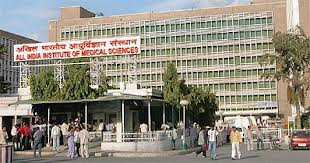New Delhi, Sep 5: A year-long analysis of cases referred to AIIMS has led to a shocking revelation — private hospitals often send dead patients to the institute after fleecing their families in a bid to escape blame for botching up cases. In some cases, the patients were so ill that they died while being transported or during admission in the casualty section.
AIIMS director Dr M C Misra said the malpractice came to their notice last year when they found a private hospital based in Noida referring three patients on the same day and all three dying even before arrival. "They had been intubated to make it appear as if they were critical; but when the doctors checked their pulse, all of them were found dead. The families of the deceased had no clue," Misra said.
The AIIMS chief said an analysis of all such referrals showed that a majority of private hospitals and some government hospitals indulged in this malpractice. "On an average, we get eight to 10 such patients every week," he added.
Dr Sanjeev Bhoi, medical superintendent of AIIMS Trauma Center, said that most patients who become victims of such malpractices often come from financially unsound background. "We do not have direct evidence but it is possible that these patients are referred when the hospitals find the families cannot afford treatment," he said.
The AIIMS director said they have adopted a new policy under which no critically-ill patient referred from another hospital can be admitted without prior information and discussion with specialists concerned. "Also, we are writing letters to those referring centres about the irregularity and sending a copy of the same to the directorate of health services for necessary action," said a senior AIIMS official.
"My brother suffered from blood cancer. When we approached AIIMS, the doctors told us there was little hope and suggested palliative care. But one of the private hospitals said the disease could be controlled with bone marrow transplant. We spent all our savings, and even sold our ancestral land to get the procedure done but his condition did not improve. Finally, they asked us to take him to AIIMS. He died a few days later," said Praveen Kumar, who lives in Sadiq Nagar in south Delhi.





Comments
Add new comment